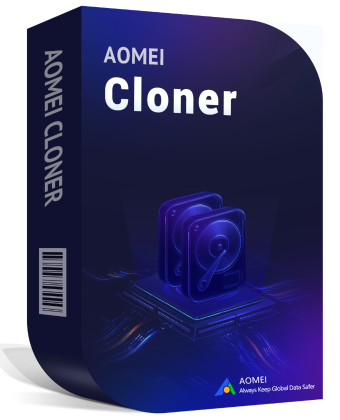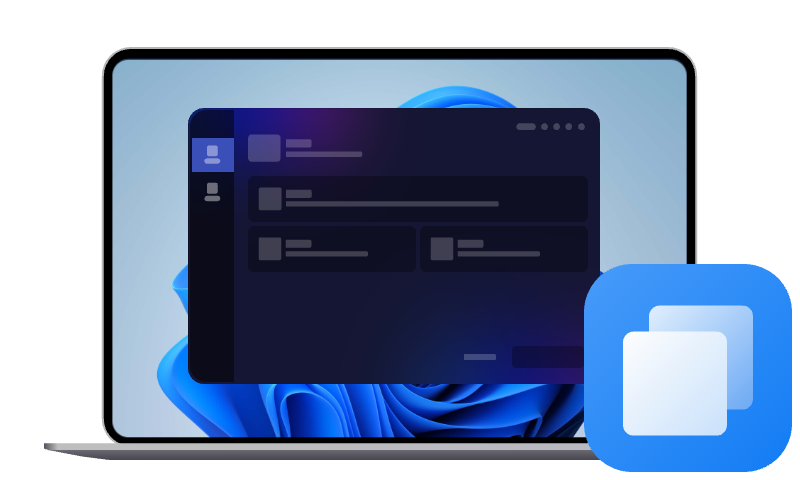Your Hard Drive Is Failing on Dell (Fixed Now)
If your Dell PC shows a hard drive failure warning, don’t panic—act fast. This guide explains what the message means and how to repair or replace the drive. We’ll also share tips to prevent future failures. Check them out now.
What triggers Dell hard drive failure warning?
Seeing “Dell your hard drive is failing” means your system has detected signs of drive degradation or errors. Here are the main causes:
1. S.M.A.R.T. Errors - Dell drives use S.M.A.R.T. technology to monitor health. If it detects bad sectors, read/write issues, or excessive wear, it triggers a failure warning.
2. ePSA Diagnostic Failures - Dell’s ePSA tool runs at boot or manually and checks hardware. If the hard drive fails this test, a warning appears before Windows loads.
3. SupportAssist Alerts - Dell SupportAssist can flag drive issues in real time, using system logs and S.M.A.R.T. data to notify you before complete failure.
4. Firmware or File System Errors - Corrupt firmware or file system problems can also cause failure messages, often signaling deeper issues with the drive.
5. Physical Damage or Aging Hardware - Mechanical damage, heat exposure, or old hardware—especially HDDs—can lead to physical failure and trigger Dell’s warnings.
If you receive the Dell hard drive failure warning, your drive may have the following symptoms:
- Slow performance and long load times
- Frequent freezes or crashes
- Clicking, grinding, or beeping sounds
- Files disappearing or getting corrupted
- Boot errors or “No Bootable Device” messages
Important: Make a backup immediately
When you see “Your hard drive is failing” on Dell, the most critical step is to back up your data right now—before the drive fails completely. Here are different backup methods for your reference:
✅Use an External Drive: Connect a USB hard drive and copy essential folders like Documents, Desktop, Photos, and Downloads.
✅Cloud Storage: If the system still runs, upload important files to OneDrive, Google Drive, or Dropbox as a secondary backup.
✅Use Backup Software: Tools like AOMEI Backupper can create full system images or backup individual files.
How do I fix a Dell hard drive failure?
To deal with Dell hard drive failure warning, you have two main paths: attempt repair (if the drive still works) or replace it (if it’s beyond recovery). Here’s how to handle both options.
Option 1: Try to repair the drive
If your PC still boots or the drive is partially functional, you may be able to fix minor issues temporarily—enough to buy time for backup or prep a replacement.
👉 Run CHKDSK
Windows has a built-in utility to scan for and fix bad sectors:
- Open Command Prompt as Administrator.
- Type chkdsk C: /f /r /x and press Enter. (Replace "C:" with the drive you want to scan for.)
- Type Y and press Enter to confirm check the disk when your PC restarts.
- Restart your PC to let the tool scan for bad sectors and attempt to repair them.
Note: This may take hours. It won’t fix physical damage, but it can repair logical errors and recover readable data.
👉 Use Dell SupportAssist
SupportAssist can recheck your drive's status:
- Open the app (or install it from Dell's website).
- Run a full hardware scan.
- Review any warnings or suggested actions.
Option 2: Replace failing hard drive
If diagnostics show "Fail", replacement is the safest option. Here’s how to do it:
✍ Note: The premise of using the cloning method is that the old disk is still readable. If not, you should remove the old drive and install the new drive in its place. Then boot from Windows installation media to install Windows from scratch.
Step 1. Choose a compatible replacement
Check your Dell model’s specs (SATA or M.2 NVMe). Compared to HDDs, SSDs are faster, more reliable, and now very affordable.
Step 2. Choose a reliable cloning software
If the drive is still readable, you can transfer everything from the old hard drive to the new drive by disk cloning. AOMEI Cloner is here to help.

- Full Disk Clone: Transfer everything from one drive to another - operating system, programs, and all your files. Works for any combination (HDD→SSD, SSD→SSD, or HDD→HDD).
- OS-Only Migration: Just move Windows system and essential boot files - perfect when upgrading to a smaller capacity SSD.
- Selective Partition Copy: Duplicate specific partitions instead of the whole disk, great for transferring important data sections.
- Intelligent Clone: Copy only the occupied sectors during the process. It is useful when cloning hard disk with bad sectors.
- SSD Optimization: Automatically adjusts partition alignment to maintain your SSD's speed and lifespan.
Download AOMEI Cloner now!
Step 3. Clone the old drive
1. Connect the new drive.
- For Desktops: Install the new drive inside (SATA or M.2 slot).
- For Laptops: Use a USB-to-SATA adapter to connect the new drive externally.
2. Install and open AOMEI Cloner. Click Clone > Disk Clone.
3. Select the old (failing) drive as the source and select the new drive as the destination.
4. Configure more cloning options and click Start Clone.
- Edit Partitions: Adjust partition size or partition style of the destination disk.
- SSD Alignment: If you copy data from HDD to SSD, use this option to improve the read and write speed of the SSD as well as prolong its service life.
- Sector By Sector Clone: Do NOT check this option as it will take considerably longer to clone the drive and the bad sectors will also be copied.
✍ Note: If your Dell computer fails to boot now, you can download and install AOMEI Cloner on another working computer. Click Tools > Create Bootable Media to make a bootable USB. Then boot your Dell computer from the bootable USB and perform disk clone.
Step 4. Boot from the new drive
- Way 1: Shut down the computer and replace the failing hard drive with the newly cloned drive, and then boot from it.
- Way 2: If your computer has extra slots, you can also keep the old hard drive, and change boot order in the BIOS (press specified key during startup to enter this menu) to boot from the new drive.
Bonus: Proactive maintenance tips
Preventing the “Your hard drive is failing” warning starts with good habits. Here are simple ways to extend your drive’s life and protect your data long-term:
⭐Back Up Regularly
The best defense against drive failure is regular backups. Use external drives, cloud storage, or automated backup tools like Windows File History or AOMEI Backupper. Set it and forget it—until you need it.
⭐Keep Your System Cool
Excessive heat shortens hard drive life. Make sure your Dell’s vents are clean, avoid using it on soft surfaces, and consider a cooling pad for laptops.
⭐Run Disk Checks Periodically
Use built-in tools like CHKDSK and Dell SupportAssist to scan for drive errors monthly. Catching issues early means more recovery options.
⭐Avoid Hard Shutdowns
Forced shutdowns and power loss during write operations can corrupt data. Always shut down properly, and consider using a UPS (uninterruptible power supply) if you’re on a desktop.
⭐Upgrade to an SSD
If you’re still using a traditional HDD, consider upgrading HDD to SSD. They’re faster, quieter, and far more durable—especially in laptops that get moved around.
Verdict
If you’re seeing “Your hard drive is failing” on Dell, don’t ignore it—your data is at serious risk. Watch for early symptoms like slow performance, file corruption, or strange noises, and back up your files immediately.
You may be able to repair the drive with built-in tools like CHKDSK or Dell SupportAssist, but in most cases, replacing the hard drive is the safest long-term fix. Take action now to save your files!

